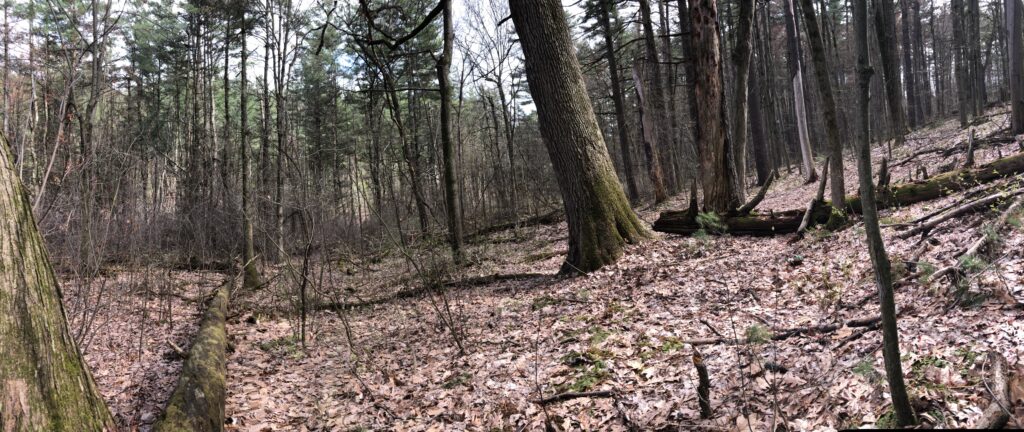
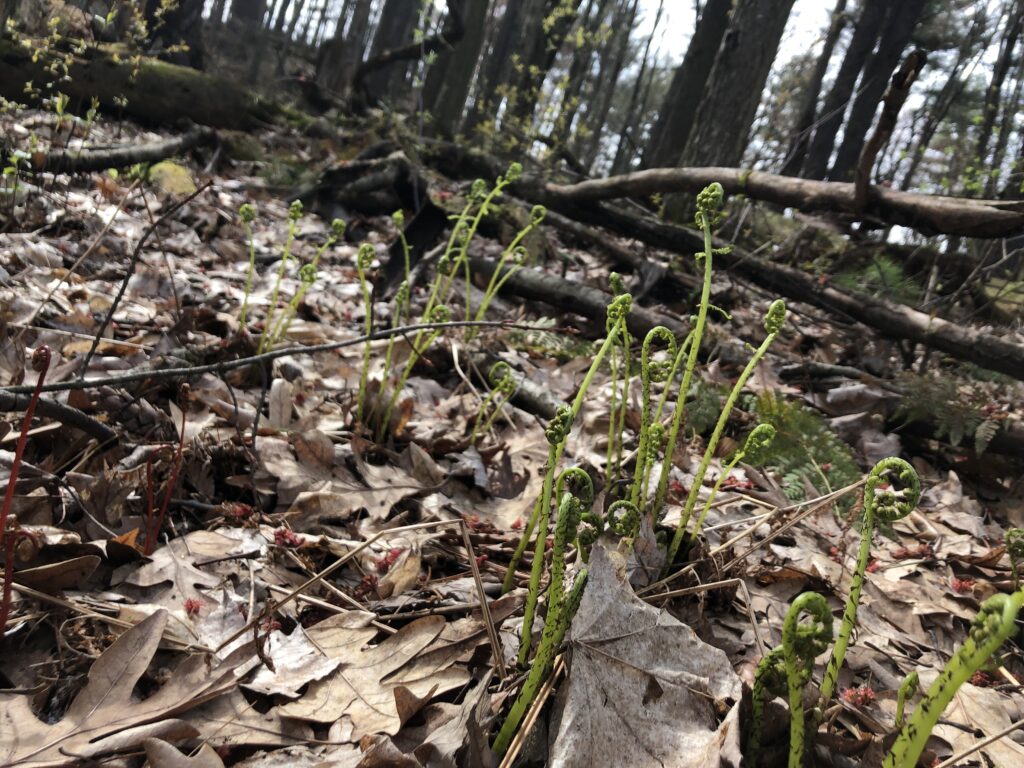
4 May
I was fortunate to have another rain-free day for what I think will be my last visit of the year to my phenology spot in Centennial woods. I decided to bring a friend with me this time, out to see the newly sprouted ferns and young trees that are just beginning to show tiny leaves after forming buds. The walk was exceptionally muddy; no doubt the soil had become saturated with rain from the past few days, to the point where each footstep landed a hearty squelch. Since my visit last week, nothing much has changed – things are more green, for sure, more vibrantly so, and there seems to be more moss, but for the most part there is nothing new or surprising.
We sit on the fallen log I’ve put in many pictures on this blog, the one that overlooks the huge oak in the center of my place. It’s a little damp, but in the surprisingly warm air it’s pleasant to touch. The birds are considerably more active today. There isn’t a moment of quiet. The air is mostly dominated by the throaty caws of two crows who dance about each other in the trees, bobbing forwards off of branches almost as if they’re bowing to each other. A chickadee sings off in the distance, and I can periodically hear the tapping of the woodpecker on one of the pine trees in the stand behind us. It’s comforting to see the woods so full of life again. I have to admit, some of the winter visits left me uneasy and sad in their silence and greyness, and I welcome the lively birdsong. There are some chirps and whistles I don’t recognize, but due to my proximity to the nearby Marsh, I guess at the existence of a red-winged blackbird.
Over the months, not only has this place been a hub of learning and quiet observation, but I have grown attached to it. Often, in times of stress or anxiety over the semester, I have sought out the very log I sat on earlier today to clear my thoughts and be within the trees. I have always felt a part of the woods and the forest wherever I go, because I just see nature as a thing that humans are intrinsically apart of, but the greater meaning of being specifically a part of THIS place is different. During the first semester, I was only an occasional visitor. I came to take photos and examine the leaves as they turned from green to yellow to red to brown, watched as they fell from the arms of their trees. I studied the soft prints in the snow, and gradually, as my frequency to this area continued to grow, I felt more and more connected to it. Nature and culture, for me, at least, are always entwined. I derive so much enjoyment and calm from nature, recreate in nature, tell stories about nature and have rooted the beginning of what I hope to be my life’s work in nature – and now this place, because I have made it so special has become a part of me. I will never forget it. Because of that, I have also become a part of it.
27 Apr
I got lucky on Thursday, the 25th, for a break in the rain. The sun peeked through the clouds, and the earth warmed up just a little bit as I walked down to Centennial in the mid afternoon. It was around 3 o’clock, the sun still high in the sky – I can’t help but feel like I’ve missed the days slowly brightening. The rain recently has choked everything else out, clouds filling and blurring the sky with greyness and water. I know we need it, though. Despite the complaints from many about mud season, the energy and revitalization of the plants is so evident.
Shocks of green pressed up through the dirt, the trees seeming even warmer in color despite only really having the beginnings of their buds. I noticed no trees that were starting to sprout leaves yet, but all the low-lying vegetation and smaller plants had started to become so green. It was a relief, almost, to see all the plantlife alive and starting to come back after what seemed like an endless, snow-covered winter – dare I say something right out of Game of Thrones. Many of the plants beginning to poke through as sprouts were unfamiliar to me, but I did manage to recognize a select few. Among the newcomers grew Ostrich Fern, dandelions, and the beginnings of other plants such as fiddleheads and wildflowers.
As for the birds, in the break from the rain, I got to see a few exciting species. A cardinal, bright red and proud, fluttered on the far end of the area I call home to my phenology blog, no doubt searching for a mate. Crows always seem to hang around in the trees, their throaty croaks often drowning out the soft trill of the chickadees that make their home in and around Centennial Woods, one of which I got to see as well. Centennial is a great place, additionally, for finding bugs, as many wet/thick logs lay criss-crossed throughout my phenology blog area. Pill bugs, centipedes, slugs, and many other creatures reside underneath these logs, relying on the decay for a food source in some cases. It certainly is a feast for many types of birds, who often eat insects for meals.
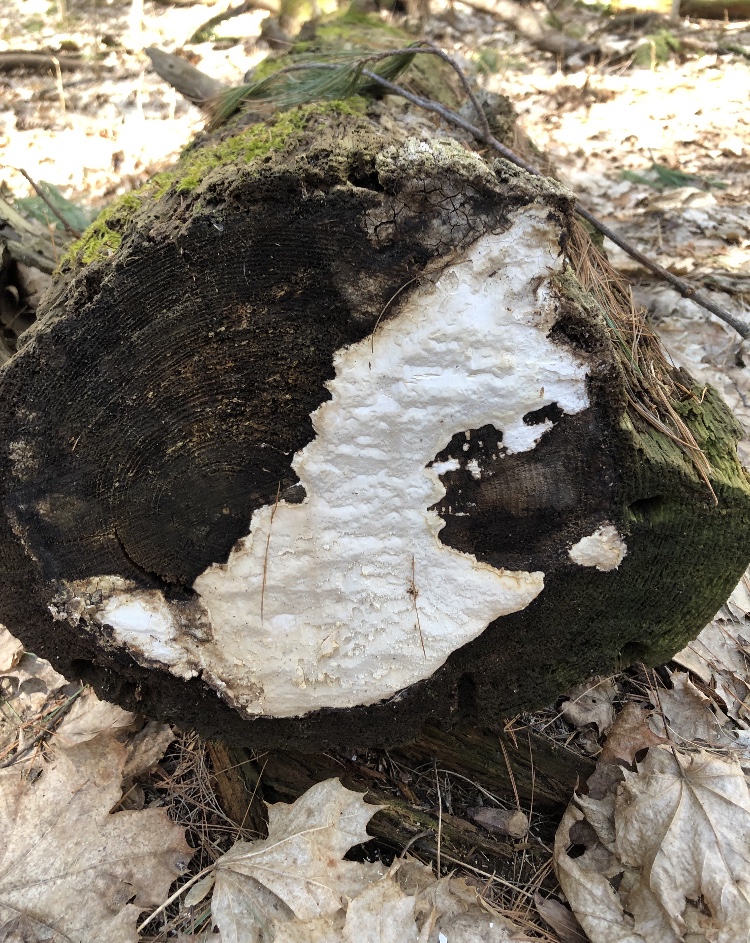
18 Mar
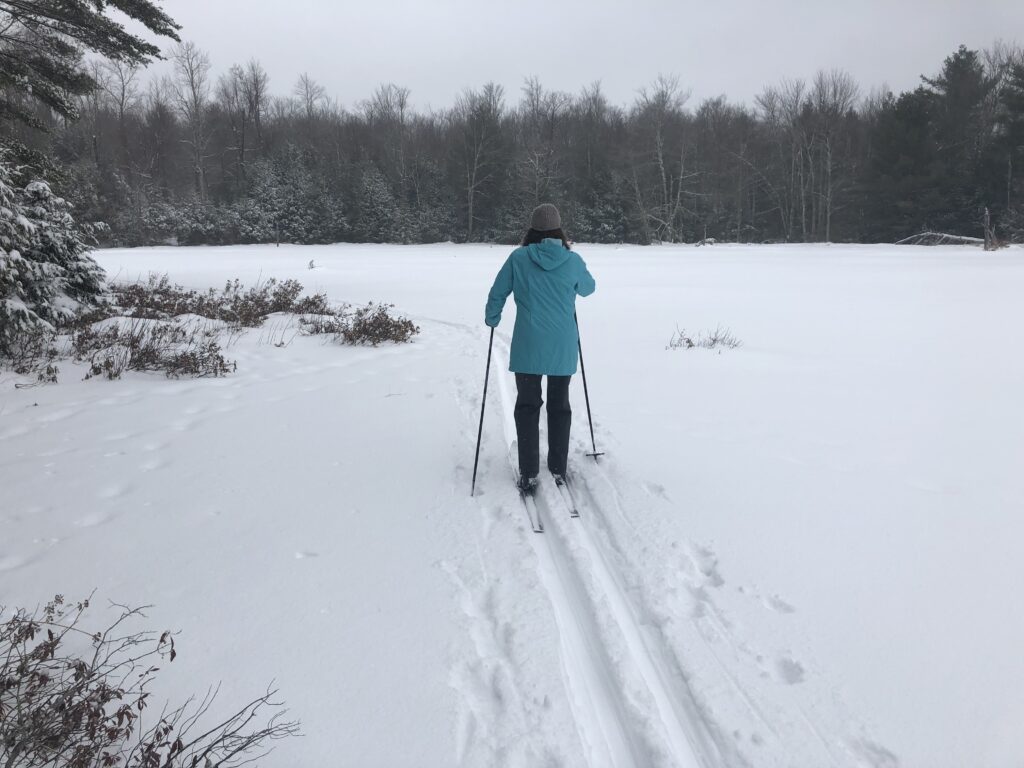
It’s a quiet morning, and I wake up a little earlier than I’m used to. Outside, snow is already softly blanketing the ground. The sky is hazy shade of grey, the treetops barely visible in the squall. I can’t see as far down my winding driveway as usual, but a quick glance out of the windows confirms that today won’t be the day that the marsh by our house melts. About halfway down my driveway, a path cuts through the woods and opens up to what is usually a marsh with water 2-3 feet deep. In the summer, cattails and lily pads cover the water, along with other various grasses. Often times, a beaver will build a dam out in the center of the water. Now, however, all that’s really growing is the various coniferous trees that fill the forests and the edges of the swampy area.
In the town where I live – Mont Vernon, NH – is about 16.7 square miles, only 0.5% of that area is covered in water. Most of it can be found in Carlton Pond and Purgatory Brook, which actually is about a 3 minute drive from my house. This little marsh brings an interesting cast of characters in the summer, but in the winter my family makes the most of it through cross country skiing. After a nice breakfast, I pull on my cross country boots and help my dad get my dog into her harness. We attach her to a harness that my dad wears, and she can pull him a bit as he skies. Most of the snow on the marsh is untouched a new, so when we glide over the snow-covered ice, the trails broken in are completely fresh. Koda, my dog, is a sled dog by breed. She’s a chinook, the New Hampshire state dog, and her breed has been used as working animals historically in the state. In the White Mountains, there’s an old historic farm that used to be where they bred the chinooks – and the first ever “Chinook”, the father of the breed, actually accompanied Admiral Byrd on an Antarctic expedition in 1929. It’s no wonder Koda looks so happy in the snow as we ski, chasing after my brother and I when we get too far away on the lake.
Besides the history of my dog, Mont Vernon’s landscape has the typical New England history. It has always been a small town, with the current population barely over 2,500 people. Established in the early 1800s after separating from the larger neighboring town, Amherst, it was predominantly a farming town until the Civil War. Following that, it became a tourist attraction for the people of Boston who wished to escape the summer heat in the more northern, forested areas. When the automobile was invented, the traffic through the town was decimated, and took a further hit when the Great Depression occurred. People at that point were able to get up to the White Mountains fairly easily, so Mont Vernon was no longer a desirable location. Population at its lowest in the town was about 300 people, but it became a residential town in the 50s and 60s, when working in nearby cities became popular. It has remained residential ever since.
4 Feb
I could feel the excitement start to grow in my chest as I pull my snow pants on in my dorm. It’s been a little over a month since I’ve last been to my site, and there’s been a lot of life that has passed through since I’ve seen the trees there. Its a Sunday afternoon, and gloomy. The sky is grey when I begin my walk from Redstone to Centennial, with a slight breeze rolling through the trees. The snow was fairly fresh from the Saturday storm, about 6 or so inches deep. Its a very quiet day in the woods, almost silent except for the wind rustling the topmost branches of the trees.
Once I get to my site, I immediately turn to the snow. There are tracks in the snow, somewhat filled in from the recent snows. They criss-cross around the area, underneath logs and around the trees. Most of them seem to resemble diagonal walkers, as if the creatures leaving them behind only had two feet like a human. I decide to attempt to identify a fairly clear set of tracks beside a fallen log on the western side of the area that I was looking at. The tracks measure around an inch and a half in diameter, and are fairly round. The pad and toes aren’t very visible due to the newer snow that has filled the tracks in, but the basic shape is still there. Other tracks have more of a drag around them, as if the animal that was walking had its belly dragging through the snow rather than being tall enough to step over it all. I used my scat and tracks book to compare the tracks to both a bobcat and a red fox, and based on the straddle and stride of the tracks I believe that they were actually red fox tracks. However, it was impossible to be sure because of the snow that had been sifted into the tracks themselves. Aside from just tracks, there is also a few places where an animal urinated, but it is possible (and more likely) that a domestic dog had just peed on the side of the trail. There were some pretty obvious dog tracks as well, which zig-zagged across my site in haphazard patterns before returning to the main path and following alongside human tracks. Unless bigfoot has a pet wolf, I think its safe to say that many of the tracks in the area can be attributed to domestic dogs.
There aren’t obvious signs on the trees of animals, but the trees themselves have changed in the winter. Now totally without leaves, many show a variety of different buds at the end of their twigs, which will persist through the winter and into the spring. Based upon the buds that I saw, here are some of the trees that I believe are found at my site:
I look forward to further acquainting myself with this area throughout the winter months, and definitely want to spend more time tracking. There are many interesting stories to learn from the animals in the wilderness, if only we wish to see them.
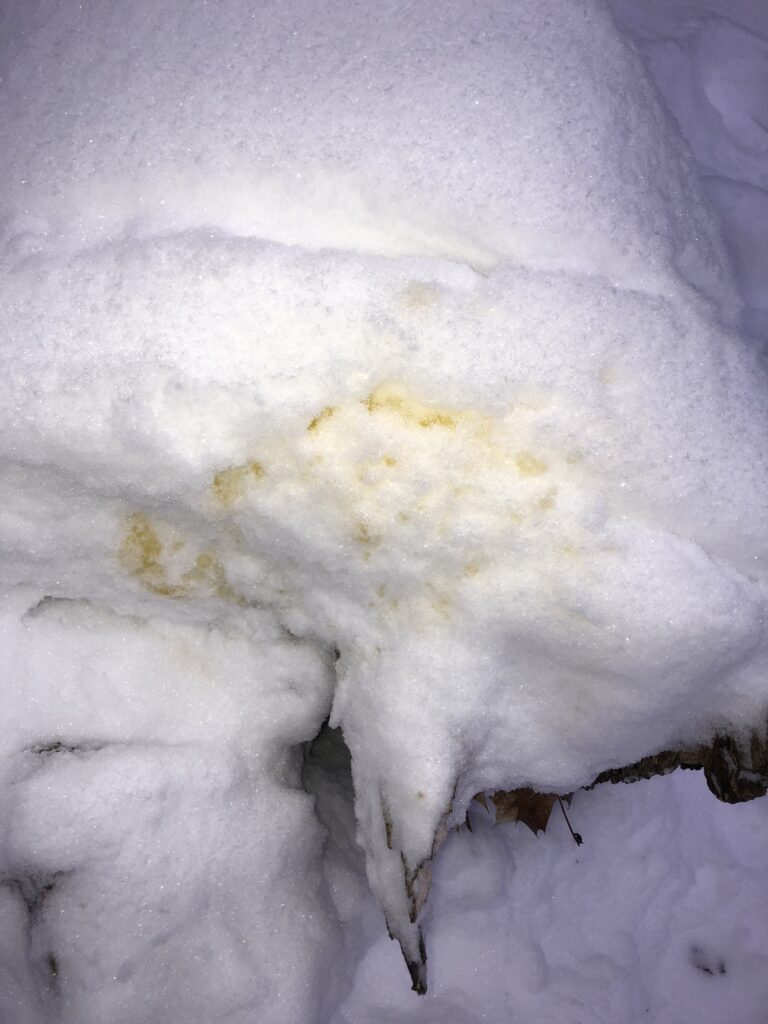
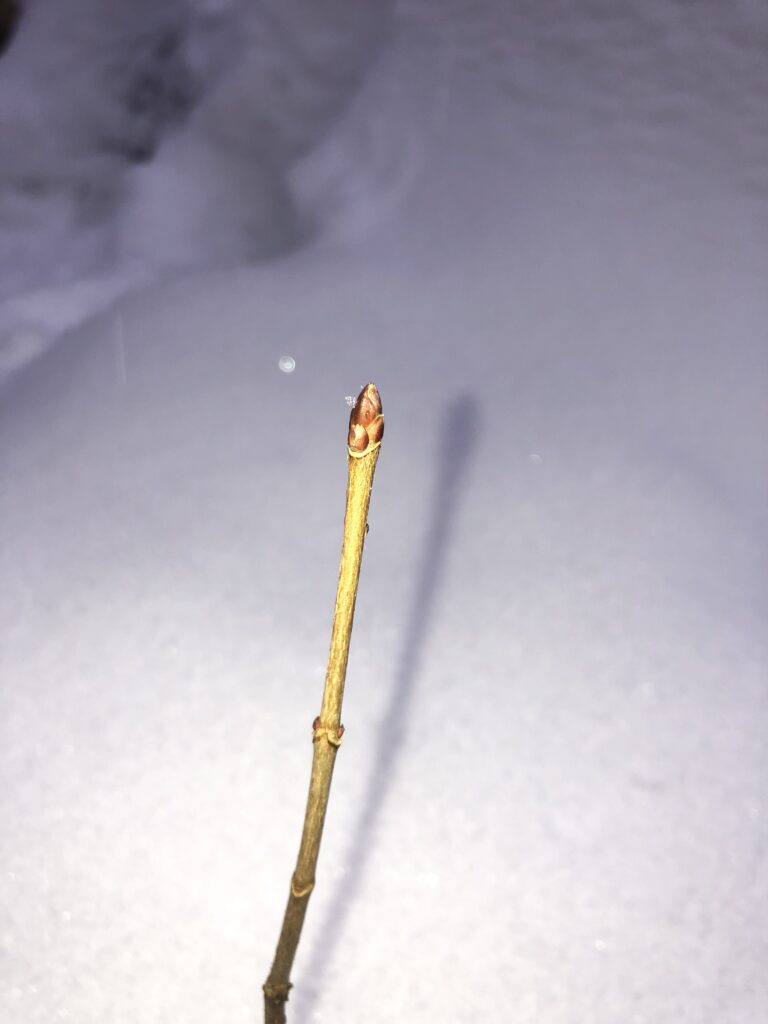
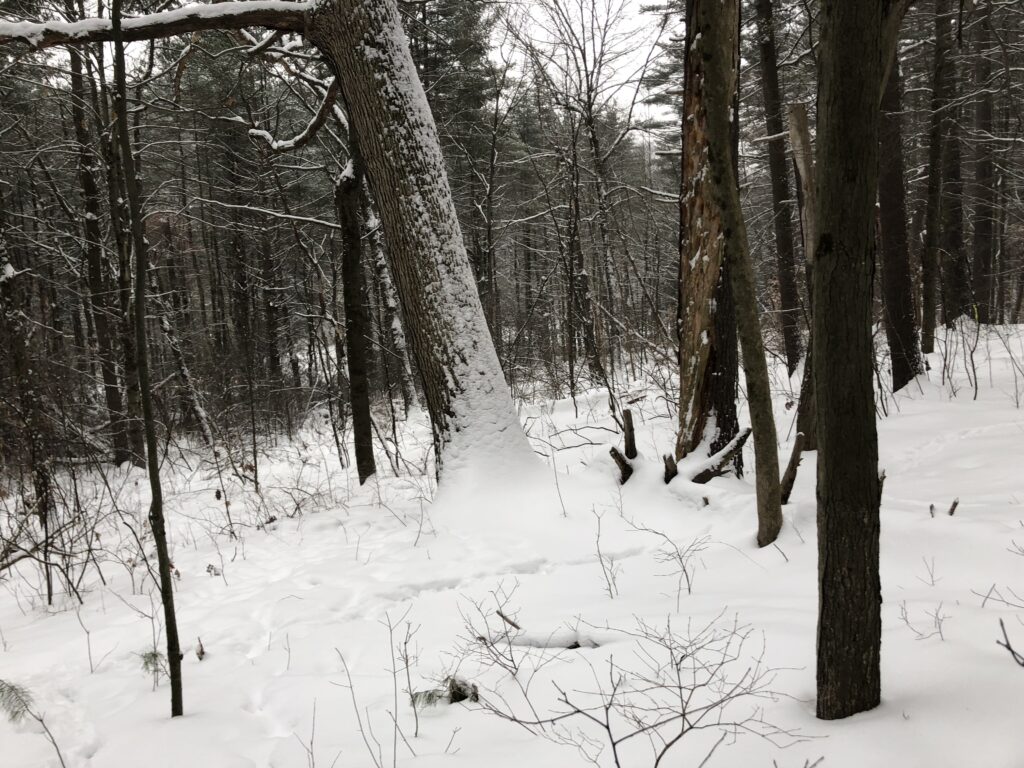
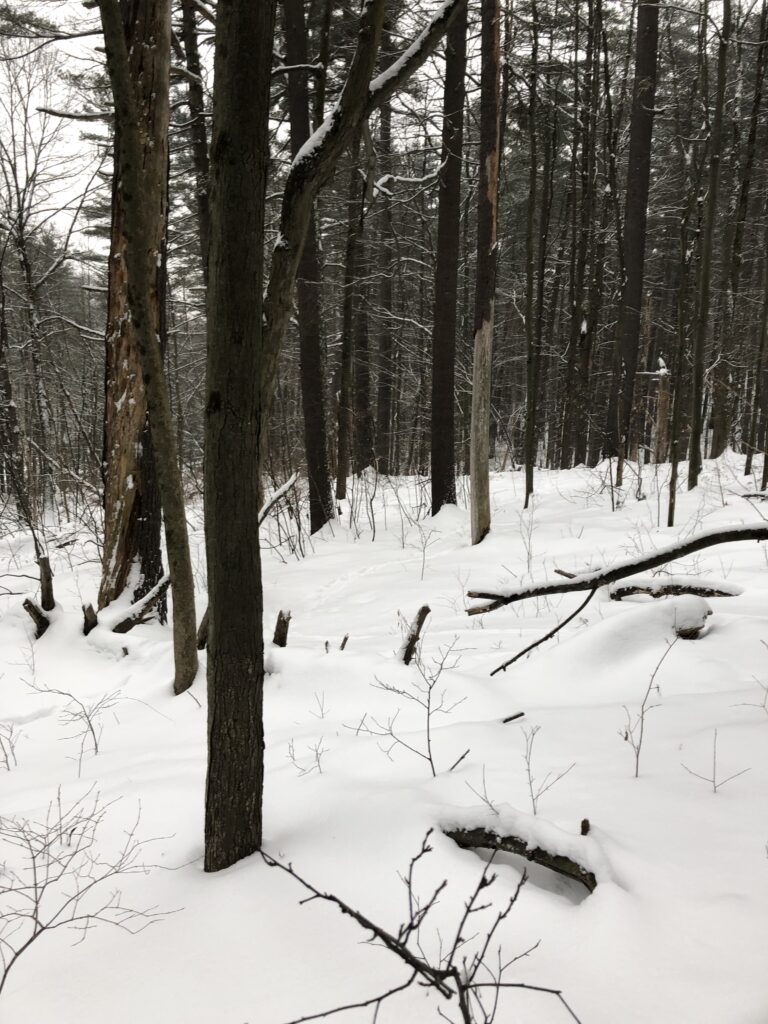

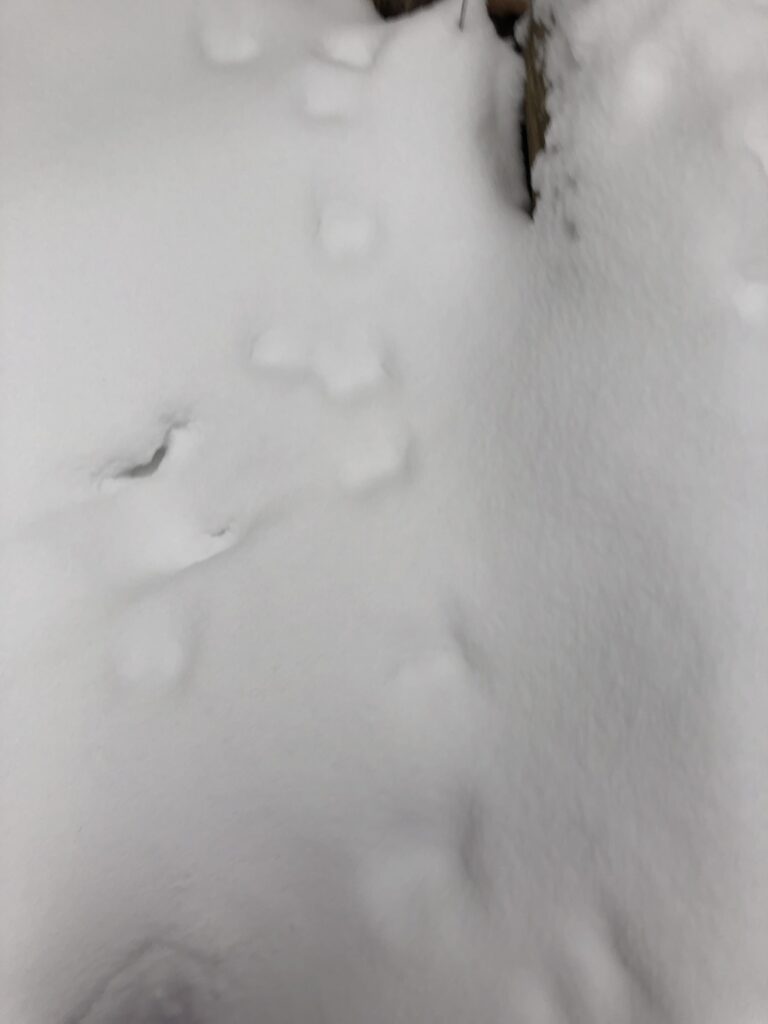
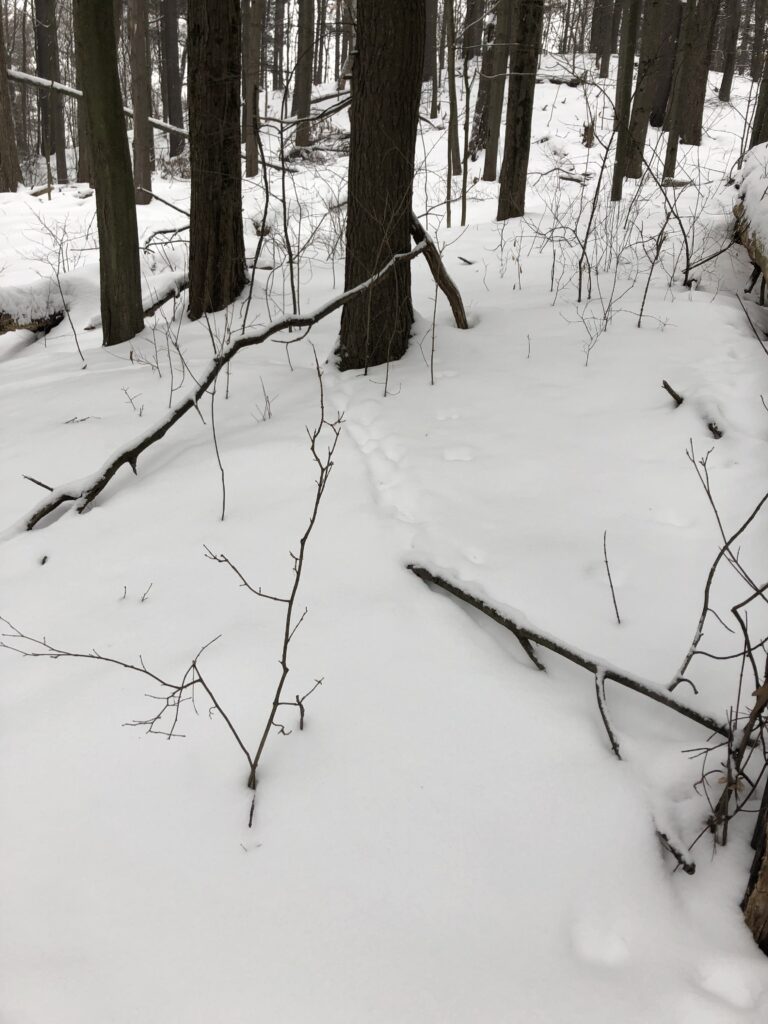
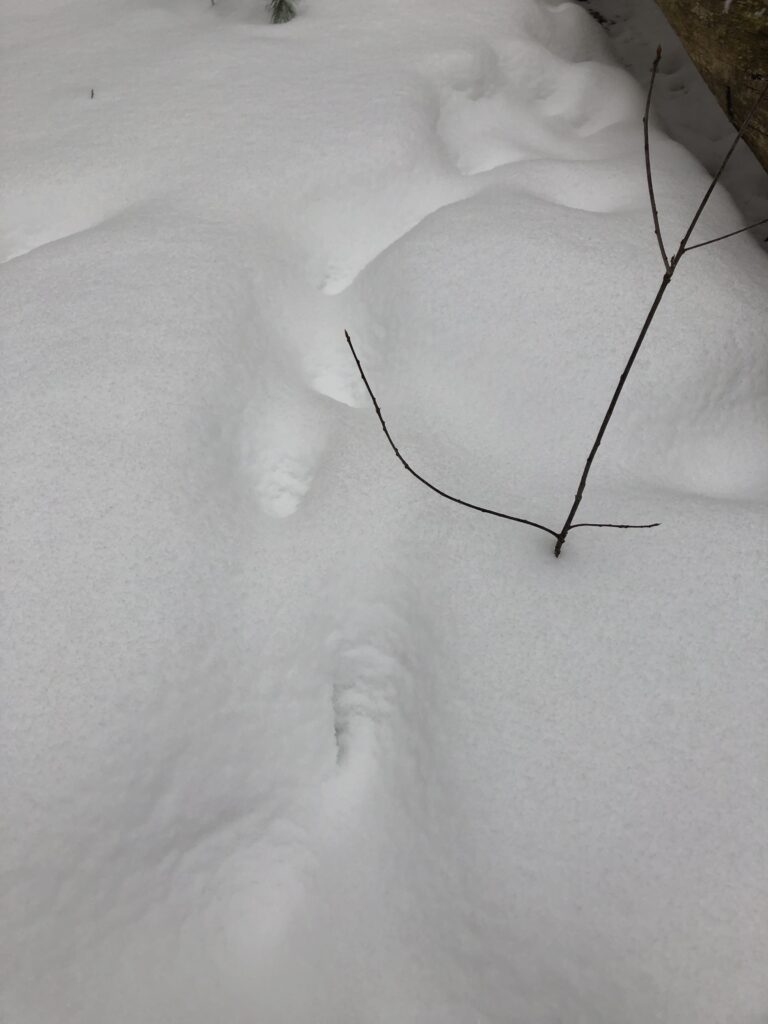
8 Dec
Though my spot in Centennial sits in a place surrounded by trees, mostly sheltered from the outside world of Burlington – it was not always that way. This land was part of where the Abenaki lived for many years. They hunted here, gathered here, and made some of their livelihood in this familiar patch of woods. After Europeans arrived, Centennial used to be part of a group of farms, with land belonging to several different gentlemen by the names of C. Baxter, H. Stevens, Hickok, Kirby, Unsworth, and the Ainsworth family. The agricultural use of the land is evidenced both through the natural species that are occurring there as well as some leftover human evidence. In the case of nature, there are many areas dominated by Eastern White pine, which, as an intermediately tolerant species, would do well re-growing in the post-farming soil. They, along with a few other species such as young beech trees, show that there was a disturbance and they grew quickly once the land use had changed. Additionally, there are leftovers of human activity in the form of barbed wire left in the woods, which is an easy nod to the farming of animals.
Though this is the last official visit I will take to my spot, it is not going to be the forever final. Over the past few weeks I have enjoyed getting to know this place and getting to love it – I have spent so much time in the tranquil air of the forest, and it has helped rejuvenate me so many times. As I walk to Centennial today, it is cold, but it is so nice to see the sun again. The previous weeks have been gloomy, shrouded with clouds and snow. The snow I enjoy, but the persistent gloom makes it difficult to be anything but tired. The crisp air, though I can feel the ends of my just barely dried hair freezing, feels good in my lungs and on my face as I move through the snow towards my spot. It’s not as deep as the last time I was here, with more plants and baby trees shooting up towards the sun. There are no ferns in sight, and the deciduous trees are especially bare now. Whatever leaves they had been clinging to are now gone, giving me easy sight through the canopy. The birds are especially quiet today, and I sit on a log for a while to wait, to see if they’ll show themselves one more time.
In the snow, there are squirrel tracks, and other footprints of human and dog. The culprits don’t show themselves during my time there, and I wait almost an hour before I decide to return to campus. Centennial is now a natural area, purchased by UVM in the 1970s to be used for research, teaching and just plain recreation. Hiking is most of the human traffic now, but plenty of students go there to learn, just as I have done for the past few weeks.
Recent Comments